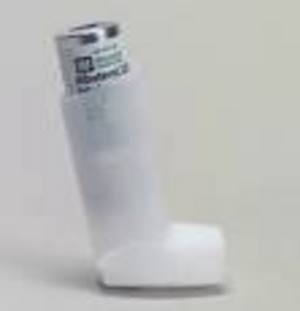Recently, my family doctor told me that he wanted to change my asthma inhaler. I am on two types of inhalers – one for short term care and one for long term care. Any asthmatic or person with COPD is probably familiar with what they call crisis inhalers or rescue inhalers. This is usually given in the form of a medicine called provental or albuterol. My doctor told me he wanted to change me to a CFC free inhaler.
CFC is the initials for chlorofluorocarbons. This is what sends the albuterol directly into the lungs. In a sense it acts as a propellant for the medicine to reach the lungs and the airways. So while the doctor actually wants to prescribe a CFC free inhaler, what he actually is prescribing is the alternate form, or a HFA inhaler. Supposedly this is better for the environment. Less CFC’s in our environment, means less destruction of our precious Ozone layers.
HFA stands for hydrofluoroalkane. This acts as a propellant for the medication in place of the CFC. The FDA or food and drug administration is working to phase out CFC inhalers by December 31, 2008. Probably most of us have heard of CFC or chlorofluorocarbons. CFC’s are bad for our environment leading to destruction of our ozone layers. Aerosol spray cans have been changing to HFA for a while to try to eliminate some of the CFC’s that are put into the environment. Also, air conditioning systems have all but eliminated freon as they contained CFC’s. While inhalers are not a huge cause of CFC in our atmosphere, they do add to the amount of CFC’s in the air. Any cut down on chlorofluorocarbons can greatly benefit the ozone layer and at least give it a chance to heal itself.
What lead to this decision to gradually change from CFC inhalers to HFA inhalers, was the United States’ participation in a summit in 1987 called the Montreal Protocol, This resulted in an international treaty that stated the countries involved would try to eliminate the production and consumption of ozone depleting chemicals that were pumped into our environment. The American Lung Association saw no other alternative at the time, and actively lobbied to have inhalers exempted from the pact. What they did do, was buy the FDA and doctors some extra time to come up with another delivery system for inhalers besides the use of CFC’s. They were given until the date mentioned previously of December 31st, 2008. Thankfully, the FDA along with scientists, researchers, and doctors, have come up with the alternative which is HFA or hydrofluoroalkane. While this was being used in aerosol cans, at first scientists weren’t sure it would work with inhalers. But with their concerted efforts, they finally figured out a delivery system for medicine using HFA’s.
Doctors and pharmacists are encouraging patients to go ahead and make the move, so they will be adjusted to the new inhalers before the deadline. While the delivery of the medicine will not be affected, the prices seem to be a bit higher at this time. While standard CFC delivery type inhalers generally have an insurance co pay of anywhere from five to twenty five dollars, the HFA inhalers are still a bit more expensive. Presently, the co pays run from twenty to sixty dollars, depending on the insurance. The FDA hopes that as patients change to the new type of inhalers, prices will start to decrease. Basically right now, patients are paying for the research that went into inventing the new delivery system for the medicine.
There however are some similarities and differences between the old inhalers or CFC inhalers and the new, or HFA inhalers. They remained the same size and shape as the original ones. They also are still backed by the FDA as far as safeness and effectiveness.
However there are differences. The old CFC inhalers are not good for the environment, as was noted previously. The new inhalers will contribute to a reduction in the destruction of the Ozone layers. The new inhalers will also have a slightly different taste and smell than the other, but the FDA states that it is not unpleasant, merely different. The mist is less forceful and will be emitted from the inhaler warm instead of cold. I see this as a very positive change. As of yet, the FDA is not sure about how the delivery of the medicine via HFA will affect care and upkeep of the inhaler. They stated that the inhaler may need to be cleaned after every use, but as of yet, they are not sure. It appears that the HFA’s may result in residual medicine dust being left on the inhaler, thus resulting in a need for more frequent cleanings.
Albuterol or proventil inhalers are meant for emergency treatment of asthma or COPD. If someone uses it more than twice a week, you definitely need to contact your doctor for another treatment method. But in the meantime, do not discontinue using your albuterol, until you seek medical treatment.
For more information about the new inhalers, you can contact the FDA website at www.fda.gov/dcer/mdi/drugs.htm. You may also go to www.lungusa.org./cfcfree or you may call the American Lung Association at 1 -800-LUNG-USA during regular work hours.
Being a newly diagnosed asthma patient, I definitely need my inhalers. This is all new to me, but if I can help the environment by changing the type of inhalers that I use, I am all for it. Anyway we can replenish our ozone layer, which we have so carelessly destroyed, sounds like a good plan to me.
Reference:
- Flyer CFC-Free Inhalers: Time to Make the Switch
